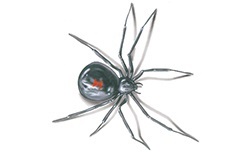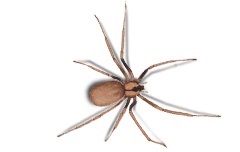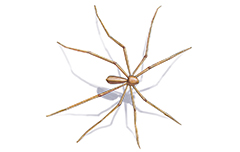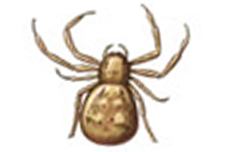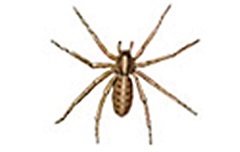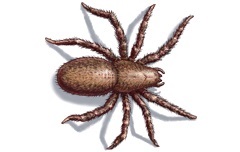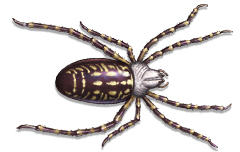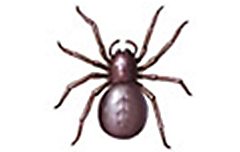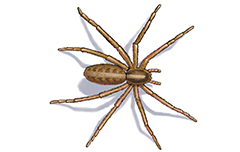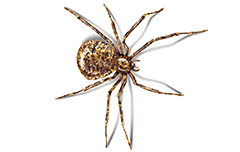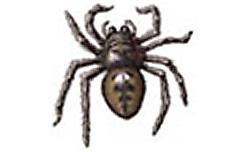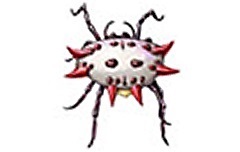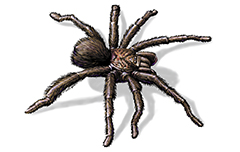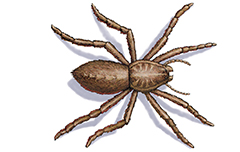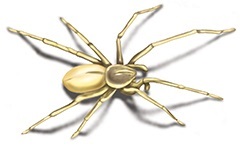Brown Recluse Spiders: What You NeeD TO Know


What are brown recluse spiders?
So, there’s this spider called the brown recluse, and you can spot it by the dark brown violin mark on its back. These guys mostly hang out in the Midwest and Southeast of the U.S. They’re like the ninjas of spiders – super secretive. You’ll find them chilling in warm, dry, and dark spots like woodpiles, basements, and closets.
Now, the brown recluse isn’t out there to attack you on purpose. It usually bites when it feels cornered—you know, like when you shove your hand into a shoe or some clothes, or maybe a box in the attic or basement where one of these spiders has set up shop. Keep an eye on anyone who gets bitten, because it takes around three hours for the bite to show symptoms and about three weeks to heal.
Here’s the serious part: their venom can cause some real trouble, especially for kids, old folks, or people with existing health issues. It can trigger severe allergic reactions, so you got to be cautious.
They call it the brown recluse, fiddleback, or violin spider because of its color and its habit of keeping to itself. These spiders are scattered in southern Europe, temperate Africa, and across North, Central, and South America. But in the U.S., they’re mainly kicking it in the Midwest and Southeast. Out of the 11 recognized species, six are kind of a big deal when it comes to public health. So, watch out!
What Do brown recluse spiders look like?
Alright, so picture this: brown recluse spiders are like the sneaky ninjas of the arachnid world. What gives them away is this dark brown violin-shaped mark on their back – it’s like their signature move. You can mostly spot these little troublemakers in the Midwest and Southeast of the good ol’ U.S. of A.
Now, these guys aren’t show-offs. They’re all about that lowkey life. You’ll find them setting up shop in warm, dry, and dim spots, like basements, closets, or hanging out in woodpiles. They’re not out to attack you, but if you accidentally corner one – say, by sticking your hand into a shoe or digging through some stuff in the attic – that’s when they might bite.
Watch out for that bite, though. It takes its sweet time, around three hours or more, to show up, and then it’ll bug you for about three weeks. And here’s the kicker – their venom can stir up some serious trouble, especially for the kiddos, the golden oldies, or anyone already dealing with health stuff. Allergies, anyone?
So, why the funky names? Brown recluse, fiddleback, or violin spider? Well, it’s all about their color and their introverted lifestyle. These guys are scattered everywhere – southern Europe, temperate Africa, and across the Americas. But in the U.S., they’ve claimed the Midwest and Southeast as their turf. Out of the 11 species out there, six are the real VIPs when it comes to public health. So, if you see a ninja spider with a violin on its back, maybe give it some space!
What are Brown Recluse spider's habits
Alright, let’s spill the tea on the habits of these brown recluse spiders. Imagine them as the mysterious loners of the spider world, rocking a dark brown violin-shaped marking on their backs – their way of saying, “Hey, I’m here, but don’t bother me too much.” These little guys love hanging out in the Midwest and Southeast of the U.S.
So, what’s their deal? Well, they’re not the flashy types. You won’t catch them strutting around in the spotlight. Nope, they’re all about the down-low life. Warm, dry, and dim places are their jam – think basements, closets, or cozy spots in woodpiles. They’re like the cool introverts of the spider universe.
But here’s where it gets interesting – these spiders aren’t into picking fights. They’ll only throw a punch, or rather, a bite, if they feel cornered. Like, imagine reaching into your shoe or digging through some old stuff in the attic – that’s when they might strike. Sneaky, right?
Now, if you happen to be on the receiving end of a brown recluse bite, buckle up. It takes its sweet time to kick in – around three hours or more – and then it’s there to bug you for about three weeks. And don’t take their venom lightly. It can cause some serious drama, especially for the younger ones, the seniors, or those already dealing with health issues. Allergic reactions are no joke.
Wondering about those quirky names – brown recluse, fiddleback, or violin spider? It’s all about their chill color and their preference for a laid-back lifestyle. You can find these guys scattered across the globe – southern Europe, temperate Africa, and all over the Americas. But in the U.S., they’ve claimed the Midwest and Southeast as their stomping grounds. Out of the 11 species, six are like the A-listers in the public health scene. So, next time you spot one of these lowkey spiders with a violin on its back, just let it do its thing – from a safe distance!
Where Do Brown Recluse Spiders live
Alright, so let’s talk about the low-key lives of brown recluse spiders. Indoors, these dudes kick it for an average of 543 days for the guys and 628 days for the ladies, but some of them can hang around for a solid 4-5 years – talk about longevity.
The ladies, being the queens of the web game, spin these irregular webs in chill spots like the garage, attic, or basement. But here’s the twist – it’s not for trapping prey. Nope, it’s more like a fancy retreat for them.
Now, when they’re outside, you can catch brown recluse spiders vibing around rocks, inner tube piles, utility boxes, and even under bark. They’re like the hipsters of the spider world, hanging out in cedar shake roofs and making cool spots their home.
But once they’re inside your pad, these spiders are basically down to crash anywhere undisturbed. Think boxes, papers, and the forgotten corners of your wardrobe – they’re like the hermits of the closet scene. You might also find them chilling under furniture, in crevices along baseboards, doors, and window moldings. And don’t be surprised if they’ve taken over your storage areas – closets, attics, crawl spaces, and basements are their go-to nesting spots.
Now, when it comes to grub, brown recluse spiders are into the small live stuff, like cockroaches and crickets. But if the prey is on the larger side, they’re cool with it being dead, probably to avoid any damage to themselves. It’s like a spider gourmet club, with insects on the menu.
So, whether they’re rocking it outdoors near rocks or setting up camp in your closet, brown recluse spiders are all about that low-maintenance, chill life. Keep an eye out for them in those cozy nooks and crannies!
Brown Recluse spiders bites
Getting a nibble from a brown recluse spider is like a silent intruder – you might not feel it at first, but then bam! It hits you with a stinging sensation, and later on, it could unleash some serious pain, either right away or after a chill 6-8 hours.
So, what’s the aftermath? A tiny blister shows up, and the area around the bite gets all puffed up. It’s like your body’s throwing a mini protest. But that’s not all – you might start feeling restless, run a fever, and wave goodbye to a good night’s sleep.
Here’s where it gets wild. Over the next 10-14 days, the dead tissue starts peeling off, revealing an open ulcer that might even expose the muscles or bone underneath. It’s like a spider bite drama unfolding on your skin.
Now, there’s this antivenom in the superhero toolkit, but here’s the catch – it’s not hanging out at the clinics just yet. If you happen to be the unlucky one who gets bitten, don’t wait around. Call up your doc or dash to the emergency room pronto. And here’s a quirky tip – bring the spider along for the ride. Not for tea, but for identification purposes.
But hold up, not every brown recluse bite turns into a full-blown ulcer situation. Sometimes, it’s just a minor inconvenience. Also, here’s a plot twist – bites from other creepy crawlies can trigger similar reactions. So, watch out for those spider surprises, and if in doubt, let the doc sort it out.
Signs of Brown Recluse Infestation
So, you’re wondering if those sneaky brown recluse spiders have set up camp in your space? Let’s spill the beans on the signs of a potential infestation:
1. **Web Game:**
Brown recluse spiders are known for their irregular webs. If you start noticing these funky, messy webs in undisturbed areas like the garage, attic, or basement, you might have some tenants.
2. **Chill Spots:**
These spiders love hanging out in cozy, dark corners. Keep an eye on seldom-used areas like closets, attics, crawl spaces, and basements. If they’re turning these spots into their personal hideouts, you might have company.
3. **Unusual Bites:**
Brown recluse bites aren’t always easy to spot, but if you or others in your space start experiencing bites with immediate stinging followed by intense pain, it’s time to pay attention. The appearance of small blisters and swelling around the bite area could be a clue.
4. **Restlessness and Fever:**
If you or your roommates suddenly become restless, experience difficulty sleeping, or run a mysterious fever, it might be worth investigating whether these eight-legged roommates are the cause.
5. **Skin Drama:**
Keep an eye on your skin. If you notice any open ulcers or unusual tissue sloughing away, it could be a sign that brown recluse spiders are making their mark.
6. **Spider Sightings:**
Of course, the most obvious sign is actually spotting these spiders. Brown recluse spiders are brown with a distinct violin-shaped marking on their backs. If you catch a glimpse of these stealthy arachnids, it’s time to take action.
7. **Professional Confirmation:**
When in doubt, call in the pros. Pest control experts can identify, assess, and deal with a potential brown recluse infestation. They’ve got the skills to distinguish these spiders from their harmless cousins.
Remember, not every spider you see is a brown recluse, and sometimes other arachnids may cause similar reactions. If you suspect an infestation, it’s best to consult with pest control professionals to ensure accurate identification and effective removal.
How to get rid of brown Recluse Spiders
Keeping those brown recluse spiders out of your home is the real MVP move. Here’s the playbook for effective control:
1. **Seal the Deal:**
Take a stroll around the outside of your home and inspect for any tiny openings or holes, especially around utility pipe entry points. Break out the silicone caulk and seal those gaps tight. This keeps the spiders and their insect buddies from making an uninvited entrance.
2. **Firewood Fortress:**
If you’ve got firewood, make it play by the rules. Stack it at least twenty feet away from your home, and elevate it five inches off the ground. This not only keeps your wood dry but also gives spiders a clear message that they’re not welcome. And yeah, wear gloves when handling that wood – just in case. Before bringing it indoors, give it a good inspection.
3. **Elevate Your Threads:**
Clothes and shoes are like VIP lounges for spiders, especially if left on the floor. Keep them off the ground, or give them a good shake before you suit up. This is crucial if you’re storing stuff in dark areas like the basement or garage. For those seldom-used items like boots, mitts, skates, gardening gear, and gloves, seal the deal by storing them in airtight plastic bags or boxes.
4. **Bring in the Pros:**
When the spider situation gets out of hand, don’t try to be the hero. Call in the licensed pest control professionals. They’ve got the skills and the tools to tackle severe brown recluse infestations. It’s like bringing in the A-team for spider showdowns.
Remember, an ounce of prevention is worth a pound of cure, especially when it comes to keeping brown recluse spiders at bay. So, seal, stack, shake, and, when needed, let the pros handle the rest.
